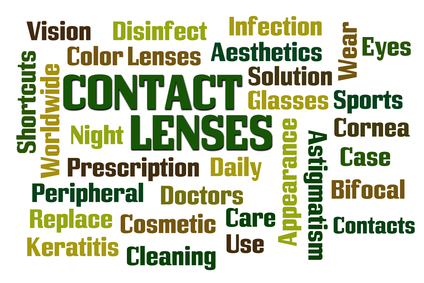ARE BIFOCAL CONTACT LENSES RIGHT FOR YOU?
 Do you have a separate pair of glasses for reading; or, do you rely on bifocals in order to see both near and far? Some people find that they struggle to read newspapers, books or menus and must hold them further away to be able to see the print better. If that is the case, it may be time to look at contacts again. Bifocal contact lenses are great for people with active lifestyles that do not want to be chained to their reading glasses.
Do you have a separate pair of glasses for reading; or, do you rely on bifocals in order to see both near and far? Some people find that they struggle to read newspapers, books or menus and must hold them further away to be able to see the print better. If that is the case, it may be time to look at contacts again. Bifocal contact lenses are great for people with active lifestyles that do not want to be chained to their reading glasses.
The perception is that as your vision gets worse you must have bifocals or reading glasses but there may be a better option. There are several different types of contacts that can be used to replace your need for reading glasses or bifocals.
The main vision disorder that multifocal and bifocal lenses are used for is presbyopia – a condition that happens as we age that affects our ability to focus on objects which are near. For instance, if tasks such as threading a needle or reading your favorite book have become nearly impossible without the help of reading glasses, then you may be suffering from this condition. The doctors at Bissell Eye Care can give a proper diagnosis as well as help you find the best treatment options.
Bifocal and multifocal lenses come in both soft and rigid gas permeable materials. They also come in a hybrid form. This means that the contacts have the option to be used and disposed of at set times, and can be daily wear lenses in some cases.
What Is The Difference
Bifocal contact lenses have two different prescriptions in the same lens. They are similar to bifocal glasses where the top half is used for seeing far while the bottom is used for seeing close. A segmented bifocal, and sometimes also referred to as an alternating or translating bifocal, places the near vision prescription in the lower part of the lens. The normal, distance prescription is in the rest of the lens.
How Multifocal Contact Lenses Work
Multifocal contacts have a range of powers in each lens and are designed two different ways.
- Simultaneous Vision. This option is set up so your eye looks through both near and far at the same time. Your brain adapts and allows focus on either the near or far prescription depending on the distance of the object.
- Alternating Vision. In the alternation set up is more like a bifocal glasses design. It allows your pupil to move up or down as necessary to get the proper focus.
If you’re tired of carrying around two pair of glasses or are always searching for a pair of reading glasses, consider giving bifocal and multifocal contact lenses a try. Patients report feeling “free” of their heavy glasses, and are able to enjoy activities such as sports more easily. Those who once thought they could never benefit from contact lenses now have a second chance.
Remember that as you begin to rely on reading glasses for tasks of everyday living, that there are alternatives to the standard bifocal glasses. As technology continually finds new ways of improving vision patients realize new alternatives to seeing well into the future.
About the author: John D. Bissell, owner of Bissell Eye Care and Tri-State Low Vision Services, offers comprehensive eye examinations for the entire family, ocular disease detection and treatment, eye glasses, sun glasses, active wear, contact lenses, and low vision examinations for those with significant vision loss. He has undergone specialized training for treatment of low vision by the International Academy of Low Vision Specialists utilizing customized telescopic eyeglasses, prisms and telescopic implants for patients who qualify. The practice accepts most types of vision and health insurance plans.
